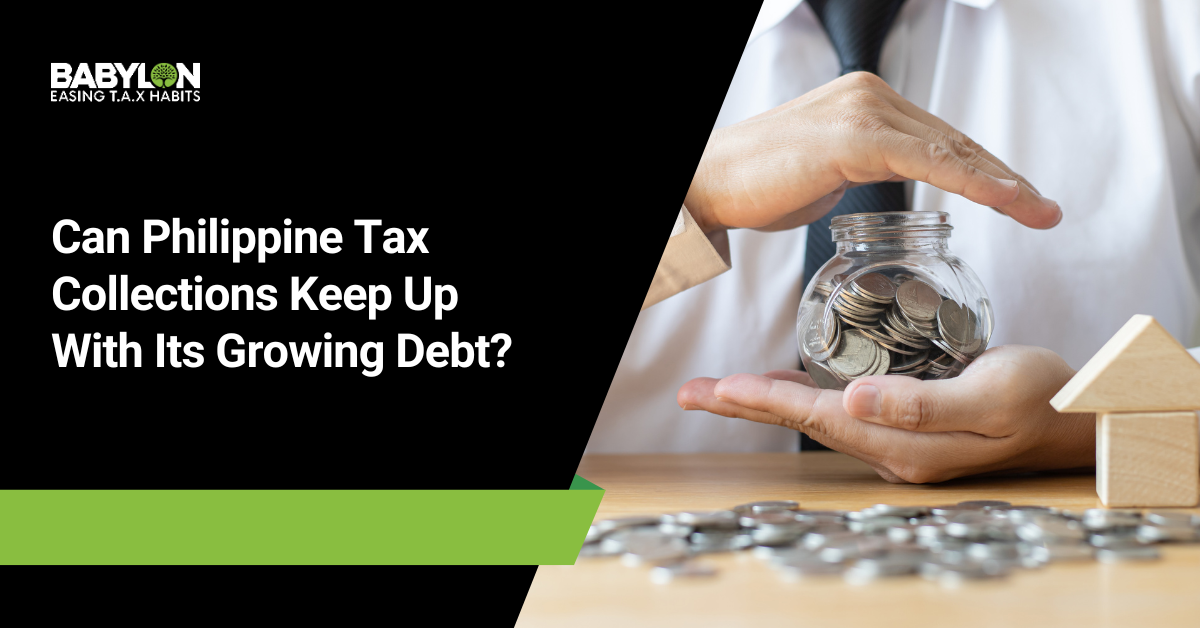As of 2024, the Philippines is sitting on a total debt pile of ₱16.05 trillion—about 60.7% of GDP. Of that, ₱5.14 trillion (USD 137.6 billion) is external debt. That means roughly 30% of our entire economy is owed to lenders abroad—from multilateral powerhouses like the ADB, World Bank, IMF to bilateral partners like Japan and China.
So the question isn’t “Are we borrowing too much?” It’s “Can we afford to keep borrowing and still function?”
Tax Takes Hits Historic High—but Is It Enough?
In 2024, government revenue collection hit ₱4.419 trillion (USD 82 billion)—equal to 16.72% of GDP. That’s the strongest revenue effort since 1997. Big win.
But here’s the kicker: ₱945 billion of that (about USD 17.16 billion) went straight to paying off external debt. That’s 3.7% of GDP, and more than 20% of total government revenue.
- Interest payments alone? ~₱450 billion (11–12% of revenue)
- That leaves a shrinking pie for healthcare, education, infra, or tax cuts.
Debt Isn’t Always the Villain—If You Build With It
Borrowing isn’t inherently bad. The government is funneling these funds into long-term bets: infrastructure, transport systems, digital connectivity, and social programs.
Done right, that means:
- Faster logistics
- Lower business costs
- More jobs
- Cheaper goods for consumers
But if those roads, bridges, or tunnels are overpriced, delayed, or underutilized? That’s just wasted debt—and the public still pays the bill.
The Real Risks: Not the Debt Itself, But the Mismanagement
- High debt service = less fiscal room. No magic money tree here. If costs go up or growth slows down, the government either:
- Borrows more
- Raises taxes
- Or cuts programs
- Borrows more
- External exposure = FX risk. Around 31% of debt is foreign—so if the peso weakens, payments spike.
How Do We Stack Up in ASEAN?
| Country | Debt-to-GDP | External Exposure | Risk Profile |
| Philippines | ~61% | ~31% (mostly fixed) | Moderate |
| Malaysia | ~64% | Higher | High (FX/interest sensitive) |
| Thailand | ~62% | Higher | Similar risk |
| Indonesia | ~30% | Lower | More fiscal space |
| Vietnam | ~34% | Lower | Stable |
The PH advantage? ~69% of debt is domestic—which buffers us from currency swings and sudden capital flight. Think less bond panic, more predictability.
Key Takeaways
- External debt servicing = 3.7% of GDP.
- Interest eats ~11–12% of all gov revenue.
- Every peso to debt is a peso away from social spending.
- But efficient infra spending can generate long-term returns.
- Poor execution = public pain, not just economic data.
What Needs to Happen Next?
- Tax efficiency has to improve. BIR and BOC are collecting better than before, but leakages still exist. No need to raise taxes if everyone just pays what’s due.
- Transparent spending = trust. Investors and rating agencies (PH currently sits at A– / BBB+) are watching closely.
- Smart debt management. Shift toward lower-cost, long-term borrowing. Cut rollover risks.
Bottom Line
The Philippines is playing a high-stakes balancing act.
- Revenues are improving
- Debt is mostly fixed and domestic
- Infrastructure is (slowly) rolling out
But interest payments are biting, and every missed project milestone costs more than cash—it costs public trust. The difference between good debt and bad debt? Execution.
This isn’t a red-alert moment—but it is a yellow flag.
Get the tax base stronger. Use debt wisely. And keep an eye on the repayment clock—because the bill always comes due.
DISCLAIMER: This article is developed by subject matter experts at Babylon2k. This is for general information only and does not constitute expert advice. It is based on current regulations and may not account for all related topics. Any tax or compliance guidance provided cannot be used to avoid penalties or promote specific actions. Laws and interpretations may change over time, which could affect the accuracy of this report. We are not obligated to update this advisory if new regulations arise.
How We Can Help
Babylon2k’s B.E.T.H. can also help you when you need more information and clarification on taxes, businesses, finance, laws, and more. Learn More >
☎️ Get in Touch!
- Request a Free Consultation | Request Consult
- Message us on Viber/ Whatsapp Number @ +63-927-945-3382.
- Email us directly at [email protected]






